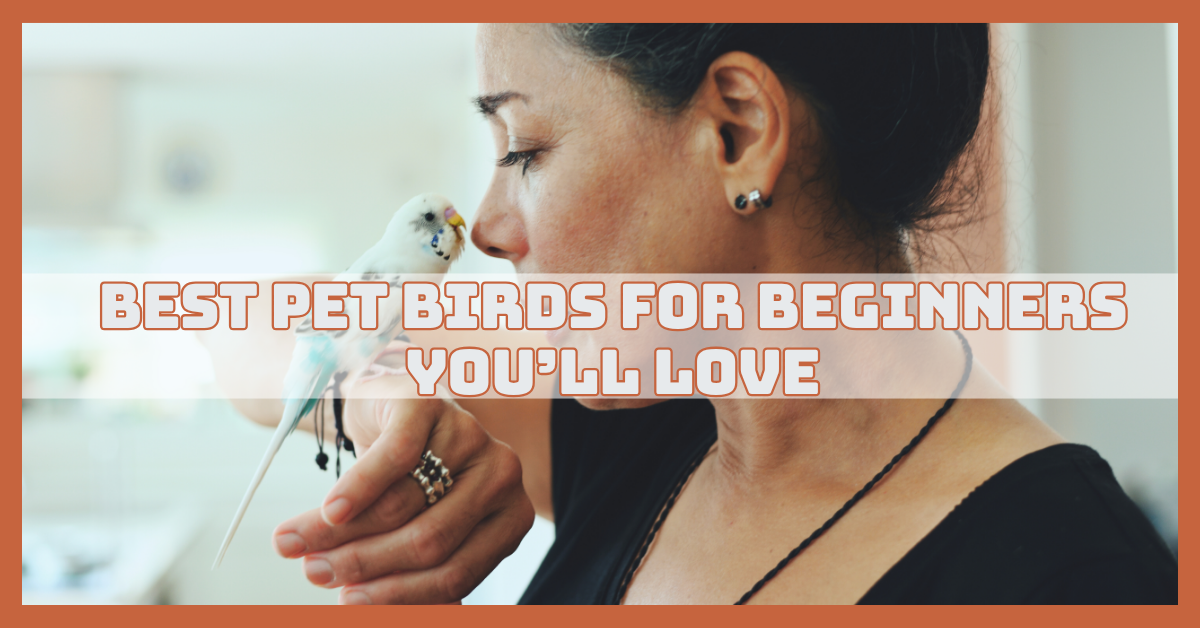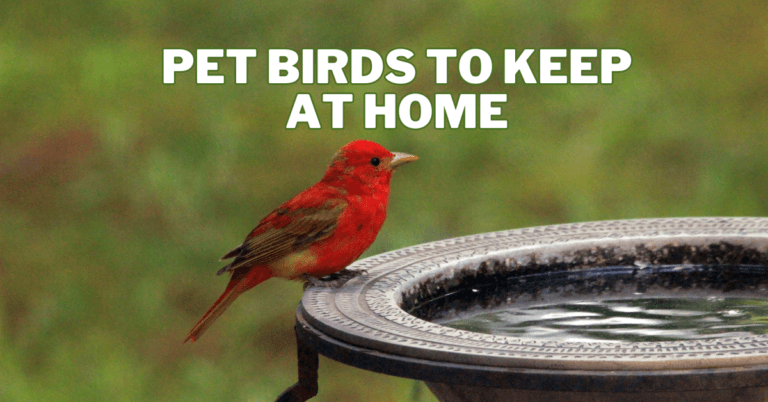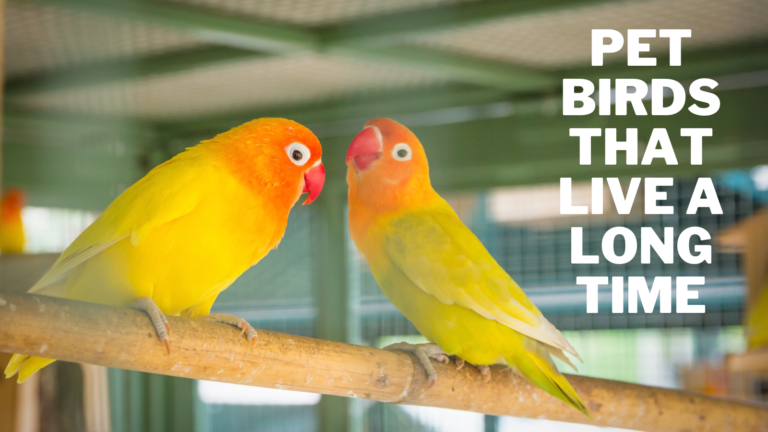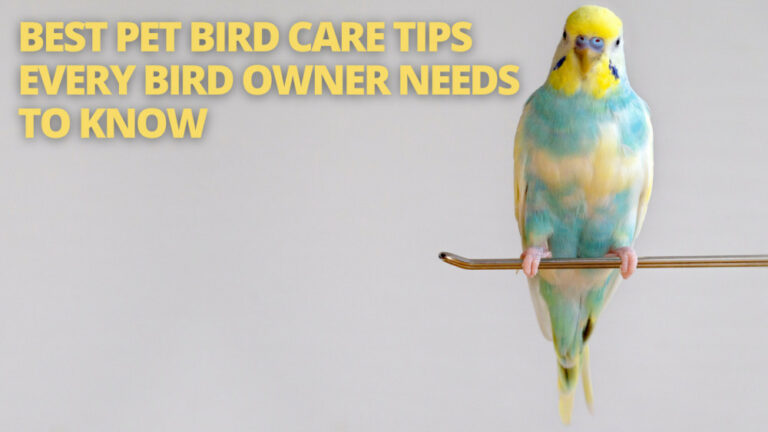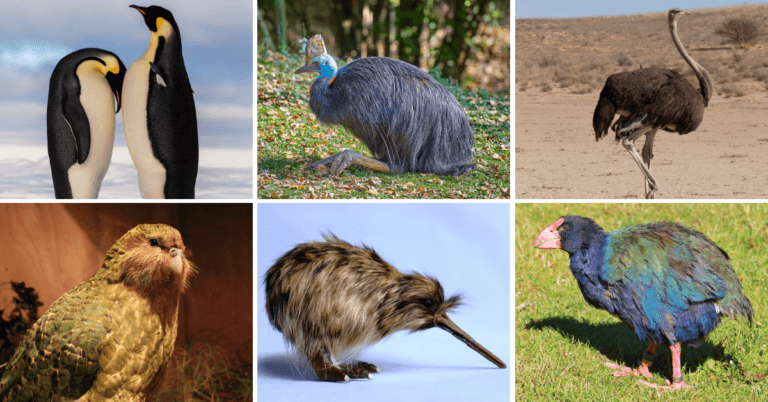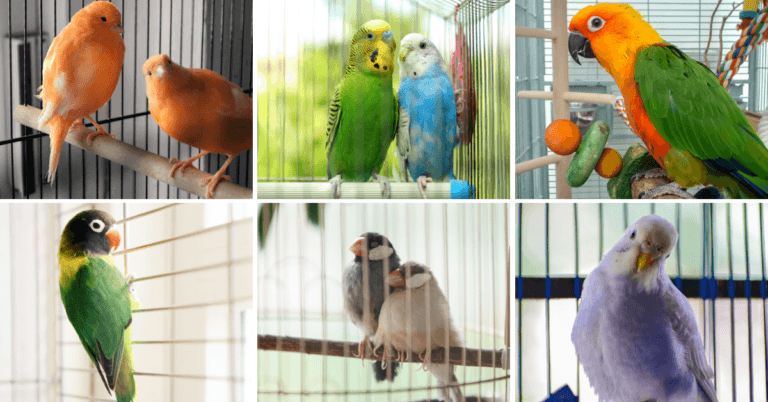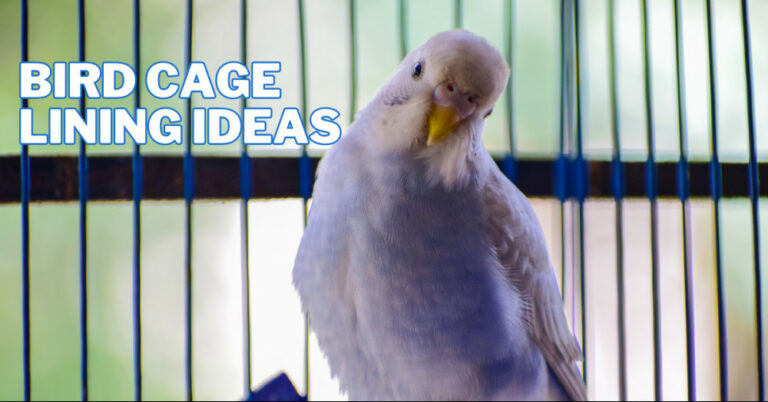Pet Birds For Beginners You’ll Love
It can be a happy and fulfilling experience to bring a pet bird into your house. Birds are intelligent, social, and full of personality, making them great companions for beginners.
However, choosing the right species is crucial, as some require more care and attention than others.
In this guide, we’ll explore the best pet birds for beginners—those that are friendly, easy to care for, and perfect for first-time bird owners looking for a feathered friend.
Best Pet Birds For Beginners You'll Love
1. Budgerigar (Budgie)
Overview
Budgerigars, or budgies, are small, intelligent parrots with vibrant green, blue, or yellow feathers and black markings. Friendly and curious, they enjoy human interaction and can learn to mimic words.
With proper care, budgies live around 7–10 years, offering delightful companionship and cheerful chirping that brightens any home environment.
Care
Budgies thrive with attentive care and daily interaction. Provide a spacious cage filled with perches, toys, and room to fly. Offer a balanced diet of quality seeds, pellets, fresh fruits, and vegetables.
Clean their cage regularly and always supply fresh water. Budgies are social birds, so spend time talking, whistling, and playing with them.
Gentle handling builds trust and strengthens your bond. Allow safe out-of-cage exercise to keep them active and healthy.
Rotate toys often to prevent boredom and encourage curiosity. With love, mental stimulation, and consistency, your budgie will stay cheerful, healthy, and emotionally connected to you.
2. Cockatiel
Overview
Cockatiels are friendly, affectionate, and social parrots with a signature crest on their head and orange cheek patches. They come in gray, yellow, and white varieties.
Known for their gentle nature and whistling ability, they live 10–15 years and adapt well to family life, making them ideal for first-time bird owners.
Care
Cockatiels thrive on daily care, attention, and interaction. Provide a spacious cage equipped with perches, swings, and engaging toys to keep them active and curious.
Feed them a nutritious mix of high-quality seeds, pellets, fresh vegetables, and occasional fruits for balance. Always keep their water clean and refresh it daily.
Regular cage cleaning prevents illness and keeps their environment pleasant. Gentle handling and consistent social time help build trust and affection.
Allow safe, supervised out-of-cage time for flying and exploring to promote exercise and mental stimulation. With proper care, your cockatiel will stay happy, healthy, and deeply bonded with you.
3. Lovebird
Overview
Lovebirds are small, colourful parrots with vibrant plumage in green, yellow, or peach shades. They are lively, social, and affectionate birds that form strong bonds with their owners.
Their lifespan is about 10–15 years, and while they rarely talk, they communicate through cheerful chirps and playful behaviour.
Care
Lovebirds thrive with attentive care, a stimulating environment, and daily interaction. Provide a spacious cage equipped with multiple perches, swings, and toys to encourage climbing, play, and mental engagement.
Offer a balanced diet of high-quality pellets, seeds, and fresh fruits or vegetables to meet their nutritional needs. Ensure fresh, clean water is available at all times and clean the cage regularly to maintain hygiene and prevent illness.
Gentle handling, consistent daily interaction, and supervised out-of-cage exercise promote trust, curiosity, and physical activity.
Lovebirds who receive the proper care stay happy, healthy, and loving companions who develop close relationships with their owners.
4. Parrotlet
Overview
Parrotlets are tiny, energetic parrots with bright green, blue, or yellow feathers. Bold and playful, they are intelligent and curious, often forming strong attachments to their owners.
Their lifespan ranges from 2 to 20 years. Though they rarely mimic words, they express personality through chirps and engaging antics.
Care
Parrotlets thrive with attentive care, space, and daily interaction. Provide a roomy cage equipped with perches, ladders, and colourful toys to encourage activity and mental stimulation.
To satisfy their nutritional demands, provide a well-balanced meal consisting of fresh fruits or vegetables, seeds, and pellets. Ensure fresh, clean water is always available and maintain cage hygiene by cleaning regularly.
Gentle handling and daily socialization help them build trust and stay affectionate. Allow supervised out-of-cage playtime for exercise and curiosity.
Observe their behaviour and health closely for early signs of illness. With consistent love and care, parrotlets remain cheerful, energetic, and deeply bonded.
5. Canary
Overview
Canaries are small, elegant birds known for their bright yellow or orange plumage and melodic singing. Gentle and low-maintenance, they live 10–15 years.
They do not mimic human speech but enchant owners with cheerful songs, making them perfect for beginners seeking a peaceful, visually appealing, and melodious companion.
Care
Canaries are delightful pets known for their gentle nature and cheerful songs. Provide a spacious cage with plenty of perches and enough room for flying and stretching their wings freely.
Feed them a balanced diet of quality seeds, fresh vegetables, and occasional fruits to keep them healthy. Always supply fresh, clean water and clean the cage regularly to maintain hygiene.
Canaries enjoy natural light and a calm environment, so place their cage in a quiet, bright area. With minimal handling needs, their low-maintenance care, pleasant singing, and friendly temperament make them one of the best pet birds for beginners.
6. Finch
Overview
Finches are small, social, and lively birds with colourful plumage including red, orange, or brown patterns. They thrive in groups and live 5–10 years.
Known for cheerful chirping rather than talking, finches are ideal for beginners seeking active, low-maintenance, and visually appealing birds that enjoy social interaction in a safe environment.
Care
Finches are small, active birds that thrive in spacious cages offering ample horizontal space for flying and multiple perches for resting.
Provide a balanced diet of quality seeds and fresh vegetables, and ensure clean, fresh water is available daily. Avoid excessive handling, as finches prefer social interaction with their own kind rather than frequent human contact.
Maintain a clean cage to prevent illness and promote well-being. Create a calm, safe environment with minimal stress and disturbances.
Supporting their natural social habits, play behaviour, and physical activity ensures finches remain healthy, lively, and content companions for bird enthusiasts.
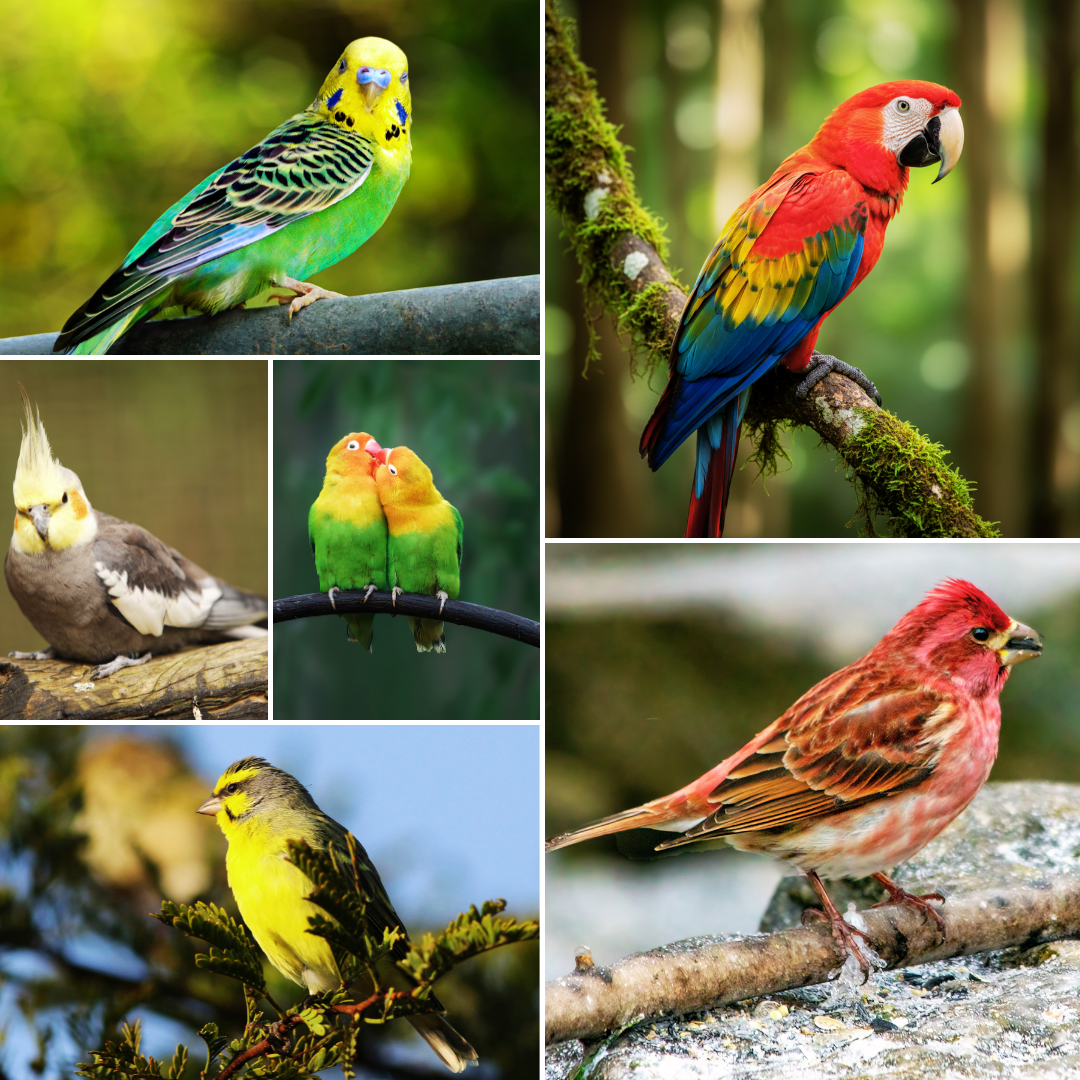
7. Green-Cheeked Conure
Overview
Green-Cheeked Conures are small, playful parrots with green feathers, a maroon tail, and a gray chest. Friendly, affectionate, and intelligent, they enjoy human interaction and can learn simple tricks.
Their lifespan ranges from 25–30 years, making them long-term companions for beginners ready to invest time in socialization and care.
Care
The Green-Cheeked Conure is a playful, affectionate, and intelligent small parrot, perfect for dedicated bird enthusiasts. These birds thrive on attention and interaction, often forming deep bonds with their owners.
Provide a large cage with horizontal bars for climbing, plus plenty of toys, ropes, and perches for stimulation. Their health and vivid plumage are supported by a diet that is balanced and consists of fresh fruits, vegetables, pellets, and a small amount of seeds.
Offer daily out-of-cage time in a safe environment to satisfy their curiosity and exercise needs. Keep their cage clean, in a bright but draft-free spot.
Green-Cheeked Conures love to cuddle, learn tricks, and chatter softly—making them delightful, loving companions for years.
8. Dove
Overview
Doves are gentle, peaceful birds with soft gray or white feathers and graceful movements. Known for their calm temperament, they live 10–15 years.
While they rarely talk, their cooing is soothing. Ideal for beginners seeking low-maintenance, serene companions, doves thrive in pairs and bring tranquillity and elegance to any home environment.
Care
Doves are gentle, social birds that thrive with proper care and a calm environment. Provide a spacious cage with multiple perches and a dedicated nesting area for comfort and security.
To satisfy their nutritional demands, provide a well-balanced diet that includes fresh vegetables, grains, and high-quality seeds.
To keep the cage hygienic and avoid disease, make sure there is always fresh, clean water available and clean it frequently. Allow occasional outdoor or supervised playtime for exercise and mental stimulation.
Gentle, consistent interaction helps build trust and strengthens your bond. With attentive care, doves remain healthy, happy, and affectionate companions for bird enthusiasts.
9. Monk Parakeet
Overview
Monk Parakeets, sometimes known as Quaker Parrots, are small, clever birds with gray faces, green plumage, and lively dispositions. They can live for 20 to 30 years and are very gregarious.
Quakers can imitate words and phrases and are good speakers. Quaker Parrots are often recommended as one of the best pet birds for beginners because of their playful, social, and intelligent nature.
Care
Parakeets thrive with attentive care, space, and daily interaction. Provide a spacious cage equipped with perches, swings, and colourful toys to encourage exercise and mental stimulation.
Offer a balanced diet of high-quality pellets, seeds, and fresh fruits or vegetables to meet nutritional needs. Ensure fresh, clean water is always available and maintain proper hygiene by cleaning the cage regularly.
Daily interaction and gentle handling help build trust, social skills, and strengthen the bond between bird and owner. Supervised out-of-cage playtime promotes physical health, curiosity, and overall well-being. Consistent care keeps monk parakeets happy, active, and affectionate companions for their owners.
10. Pionus Parrot
Overview
Pionus Parrots are medium-sized, calm birds with dark green plumage and distinctive colored markings on their tail or neck. Known for gentle, affectionate personalities, they live 25–35 years.
Quiet compared to other parrots, they rarely talk but enjoy bonding, making them excellent beginner-friendly pets for those seeking a low-noise, loving companion.
Care
Pionus parrots thrive with attentive care, a stimulating environment, and daily interaction. Provide a spacious cage equipped with multiple perches, toys, and climbing structures to encourage exercise and mental engagement.
Serve a balanced diet consisting of fresh fruits, vegetables, high-quality seeds, and pellets to meet their nutritional needs. Ensure clean, fresh water is always available and maintain proper hygiene by cleaning the cage regularly.
Gentle handling and consistent social interaction help build trust and strengthen the bond with their owner. Occasional supervised out-of-cage time promotes physical activity, exploration, and mental stimulation. With dedicated care, Pionus parrots remain healthy, happy, and affectionate companions.
11. Bourke’s Parakeet
Overview
Bourke's Parakeets are regarded as one of the greatest pet birds for novices because of their low maintenance care needs, friendly disposition, and quiet manner. They are calm, friendly, and enjoy gentle interaction.
With a lifespan of 7–12 years, they are ideal for beginners seeking a peaceful, low-maintenance bird that brings beauty and subtle charm to any home.
Care
The Bourke’s Parakeet is a gentle, quiet, and easygoing bird, perfect for beginners and calm households. These charming birds thrive in a peaceful environment and enjoy flying, so provide a spacious cage or aviary that allows ample movement. Include soft perches, swings, and toys to keep them engaged without overstimulation.
Their diet should consist of quality pellets, millet sprays, fresh greens, and finely chopped fruits. Clean water and regular cage maintenance are essential for their health.
Bourke’s Parakeets prefer early morning and evening activity, so cover the cage at night for proper rest. With kind handling, patience, and consistency, they become affectionate, soothing companions that brighten any home.
12. Lineolated Parakeet
Overview
Lineolated Parakeets, or Linnies, are small, calm parrots with soft green or blue-gray feathers and a peaceful nature. They live 15–20 years and enjoy gentle interaction rather than loud play.
Intelligent yet quiet, they are perfect for beginners looking for affectionate, low-noise, and easy-to-care-for companion birds.
Care
The Lineolated Parakeet, often called the “Linnie,” is a calm, affectionate, and highly adaptable pet bird—perfect for both beginners and experienced owners.
These birds are quieter than most parakeets, making them ideal for apartment living. Provide a wide cage with horizontal bars for climbing, along with a mix of natural perches, ladders, and shreddable toys.
A nutritious diet of pellets, fresh vegetables, fruits, and some seeds keeps them healthy and active. They enjoy daily out-of-cage time and gentle social interaction, bonding easily through calm conversation and treats.
Keep their cage clean and in a well-lit, draft-free area. With steady care and attention, Lineolated Parakeets reward owners with loyalty, charm, and peaceful companionship.
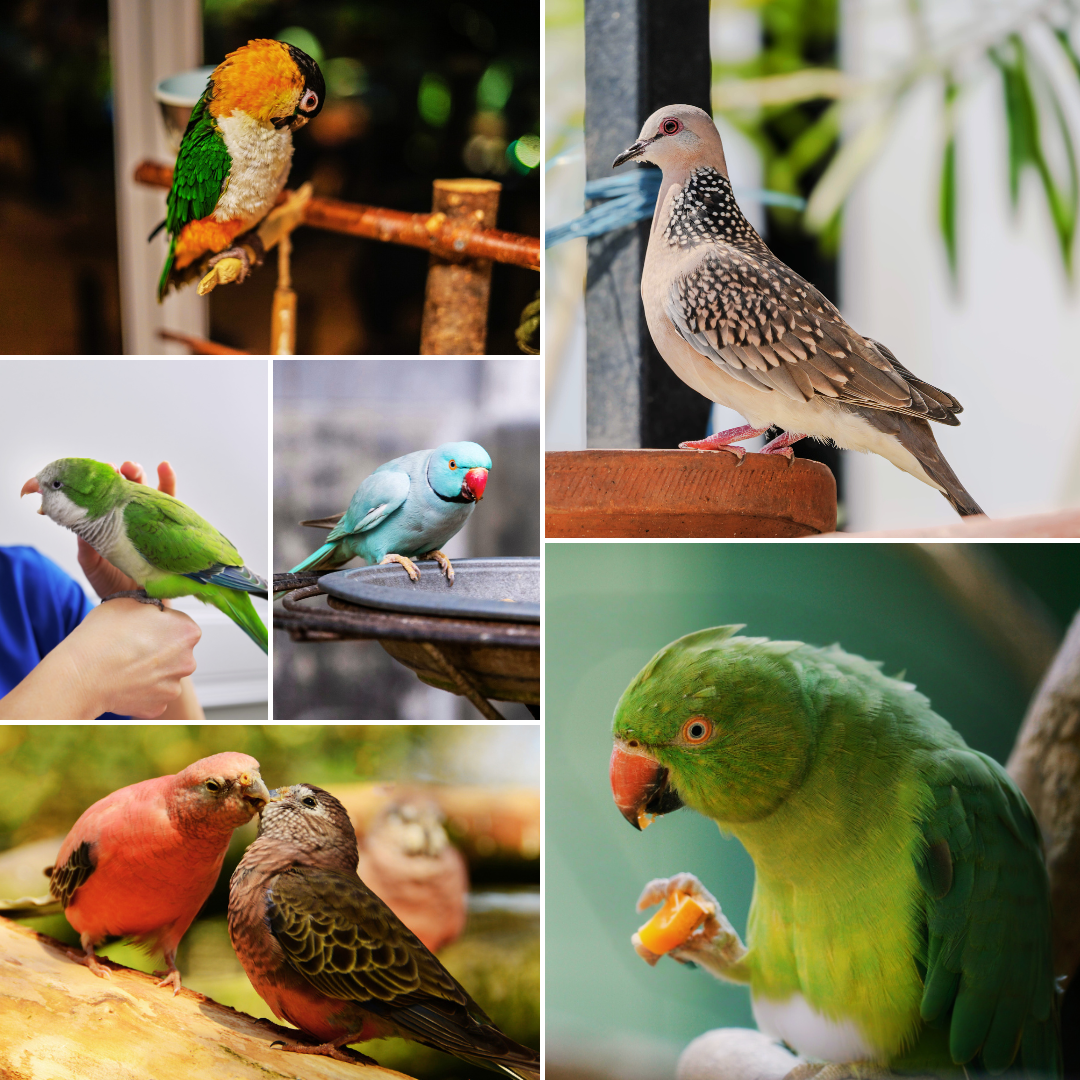
13. Meyer's Parrot
Overview
Meyer’s Parrots are small, robust birds with green plumage, blue flight feathers, and expressive personalities. Friendly, affectionate, and intelligent, they live 20–30 years and enjoy social interaction.
While they are quieter talkers than other parrots, they can mimic sounds and form strong bonds with their owners, making them great for beginners.
Care
Meyer’s Parrot is a delightful, medium-sized African parrot known for its calm temperament and playful curiosity. As a long-time bird enthusiast, I find them to be wonderfully balanced pets—affectionate yet independent.
Provide a spacious cage with strong perches, chewable toys, and climbing opportunities to satisfy their active nature. Their diet should include high-quality pellets, mixed seeds, fresh fruits, and vegetables for optimal health.
Daily interaction and gentle training sessions keep them social and mentally stimulated. Ensure their cage is placed in a bright, draft-free spot where they can observe family life without stress.
Meyer’s Parrots are generally quiet and bond deeply with their caretakers, offering years of gentle, devoted companionship.
With consistent care, attention, and a stimulating environment, parakeets remain happy, healthy, and affectionate companions, enriching the life of their owner.
14. Senegal Parrot
Overview
Senegal Parrots are recognized as one of the best pet birds for beginners because of their playful nature, intelligence, and moderately low-maintenance care requirements.
Intelligent and affectionate, they live 25–30 years and enjoy human interaction. Known for quiet chatter rather than extensive talking, they are ideal for beginners seeking an interactive, loyal, and moderately low-maintenance companion.
Care
Senegal parrots thrive with attentive care, a spacious environment, and daily interaction. Provide a roomy cage equipped with multiple perches, swings, and colourful toys to encourage exercise, play, and mental stimulation.
Offer a balanced diet of high-quality pellets, seeds, and fresh fruits or vegetables to meet their nutritional needs. To maintain hygiene and avoid disease, make sure there is fresh, clean water available every day and clean the cage regularly.
Gentle handling, consistent socialization, and supervised out-of-cage time promote trust, curiosity, and mental enrichment.
Senegal parrots maintain their health, happiness, and affection as companions and develop close relationships with their owners when given the proper care.
15. Indian Ringneck Parakeet
Overview
Indian Ringneck Parakeets are medium-sized, colourful birds with green feathers and distinctive colored rings around their necks.
Highly intelligent and lively, they live 25–30 years and can develop excellent talking ability. Energetic and curious, they are suitable for beginners who can provide consistent socialization and mental stimulation.
Care
The Indian Ringneck Parakeet is a vibrant, brilliant bird that requires consistent care and attention to thrive at home. As an experienced bird owner, I recommend providing a large, sturdy cage with multiple perches, foraging toys, and plenty of space for wing flapping.
These parakeets are social and need daily human interaction—talk to them, teach words, or let them explore safely outside the cage. High-quality pellets, fresh fruits, leafy greens, and seeds in moderation should all be a part of their diet.
Maintain cage hygiene, offer clean water daily, and keep them in a bright, draft-free room. With dedication, they’ll reward you with affection, chatter, and lifelong companionship.
16. Peach-Faced Lovebird
Overview
Peach-Faced Lovebirds are small, vibrant parrots with green bodies and peach-colored faces. Social, playful, and affectionate, they form strong bonds with owners or partners.
With a lifespan of 10–15 years, their cheerful personality, active nature, and charming antics make them ideal for beginners ready to engage with lively, interactive birds.
Care
The Peach-Faced Lovebird is a charming and affectionate companion, ideal for dedicated bird lovers. These birds thrive on social interaction and should never be left alone for long periods—consider keeping them in pairs if possible.
Provide a spacious cage filled with chew toys, ladders, and swings to keep them entertained and mentally active. Their health depends on eating a balanced diet of leafy vegetables, fresh fruits, and pellets.
Clean their cage regularly and ensure fresh water is always available. Place the cage in a warm, well-lit area away from drafts.
With daily attention, gentle handling, and patience, Peach-Faced Lovebirds become deeply bonded, joyful pets that fill your home with energy and charm.
17. Zebra Finch
Overview
Zebra Finches are small, energetic birds with gray, white, and orange plumage and striped tails. Social and lively, they thrive in pairs or groups and live 5–10 years.
Known for cheerful chirping rather than talking, they are perfect for beginners seeking active, low-maintenance, and visually appealing birds that brighten any room.
Care
Zebra Finches thrive with proper care, space, and a stimulating environment. Provide a spacious cage with ample horizontal room for flying, along with multiple perches to support natural perching behaviour.
Offer a balanced diet of quality seeds, fresh vegetables, and occasional fruits to meet their nutritional needs. To keep the cage hygienic and avoid disease, make sure fresh, clean water is supplied every day and clean it frequently.
Avoid excessive handling, as these birds prefer interacting with their own kind. Provide opportunities for socialization, supervised exercise, and mental stimulation. Consistent care keeps Zebra Finches happy, healthy, active, and well-adjusted companions.
18. Society Finch
Overview
Society Finches are small, friendly birds with soft brown, white, or speckled feathers. Gentle and social, they thrive in groups and live 7–10 years.
Non-talking but cheerful, these finches are ideal for beginners seeking peaceful, low-maintenance pets that are easy to care for and provide social companionship and visual delight.
Care
The Society Finch, also known as the Bengalese Finch, is a gentle, social, and low-maintenance bird—perfect for beginners or peaceful households.
These finches thrive best in pairs or small groups, as they are happiest with company. Provide a spacious cage with horizontal space for flying and include soft perches, swings, and nesting materials.
Their diet should consist of finch seed mix, supplemented with fresh greens, egg food, and clean water daily. Keep their environment calm, well-lit, and draft-free.
Society Finches are not demanding and rarely bite, making them ideal for families. With consistent care and a clean, comfortable habitat, they bring soft chirps, beauty, and harmony to any home.
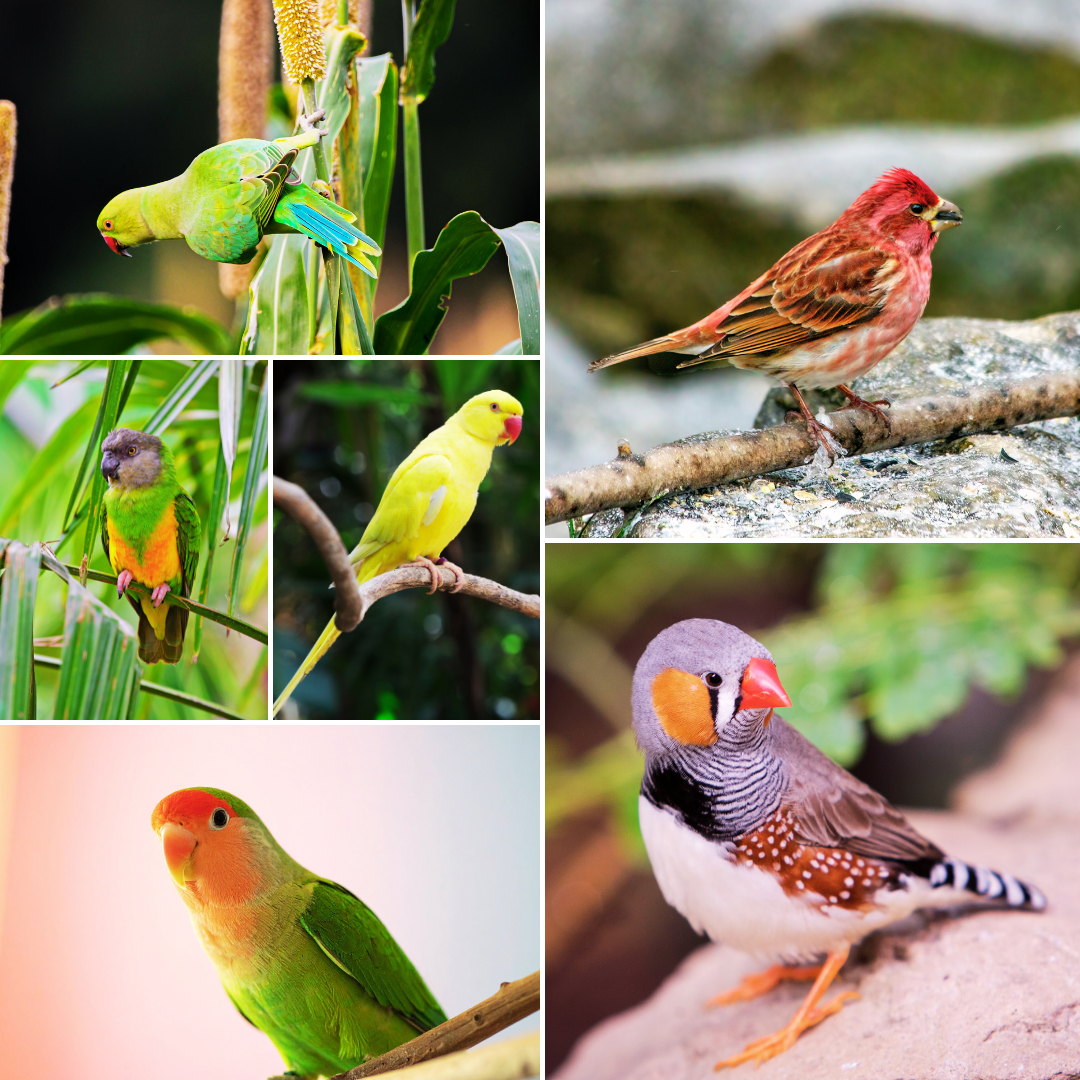
19. Crimson Rosella
Overview
Crimson Rosellas are regarded as one of the best pet birds for beginners because of their friendly, intelligent, and engaging nature. Friendly, thoughtful, and curious, they live 15–20 years.
While not strong talkers, they enjoy interaction and can learn simple words or whistles. Their striking colours and playful personalities make them suitable for beginners ready for engaging, moderately active birds.
Care
The Crimson Rosella is a stunning, medium-sized parrot known for its vivid red and blue plumage and gentle personality. As a seasoned bird owner, these birds need both mental and physical stimulation to thrive indoors.
Provide a spacious aviary-style cage with sturdy perches, climbing branches, and foraging toys. High-quality pellets, fresh fruits, vegetables, and occasionally seeds should make up their diet.
Crimson Rosellas enjoy flight, so allow supervised out-of-cage time daily in a safe area. Keep their environment calm, well-lit, and away from drafts.
Regular interaction builds trust, helping them stay tame and social. With proper care, these beautiful birds bring vibrant colour and soothing charm to your home.
20. Alexandrine Parakeet
Overview
Alexandrine Parakeets are medium to large parrots with green feathers, red patches on wings, and long tails. Intelligent, affectionate, and playful, they live 25–30 years.
With strong talking potential, they require social interaction and mental stimulation, making them suitable for beginners committed to long-term companionship with a lively, interactive bird.
Care
The Alexandrine Parakeet is a majestic, intelligent, and affectionate bird, best suited for owners who can dedicate time and patience to its care.
Known for their striking green plumage and impressive red shoulder patches, these parrots thrive in interactive environments.
Provide a large, sturdy cage or aviary with multiple perches, ladders, and chewable toys to satisfy their strong beaks and active minds.
They stay healthy and energetic by eating a balanced diet of pellets, fresh fruits, vegetables, and a small amount of nuts. They require daily socialization, training, and out-of-cage exercise to prevent boredom and feather plucking.
Keep their surroundings bright, clean, and draft-free. With proper attention, Alexandrine Parakeets form loyal, talkative, and engaging companions that enrich any bird lover’s life.
21. Pacific Parrotlet
Overview
Pacific Parrotlets are tiny, vibrant parrots with green or blue plumage and prominent personalities. Bold, intelligent, and playful, they live 15–20 years.
Though small, they are curious and affectionate, forming strong bonds with owners. Their lively nature makes them perfect for beginners ready for interactive, entertaining, and low-maintenance birds.
Care
The Pacific Parrotlet is a tiny yet bold and intelligent bird, often called a “pocket parrot” for its playful spirit and affectionate nature.
They adore interacting with their owners regularly and have large personalities despite their diminutive stature. Provide a spacious cage with climbing branches, swings, and chew toys to keep them stimulated and active.
A diet of pellets, fresh vegetables, fruits, and some seeds supports their health and bright plumage. Pacific Parrotlets thrive on routine social time, learning tricks, and exploring safely outside the cage.
Keep their environment clean, well-lit, and away from drafts. With gentle training and attention, these spirited birds become deeply bonded, charming companions full of energy and character.
22. White Dove
Overview
Due to their calm companionship, low maintenance requirements, and kind disposition, White Doves are regarded as one of the best pet birds for beginners. Peaceful and low-maintenance, they live 10–15 years.
They do not talk but offer soothing cooing sounds. Ideal for beginners seeking a serene, visually beautiful pet, they thrive in pairs and provide companionship with minimal stress.
Care
Doves thrive with attentive care, space, and a calm environment to support their gentle nature. Provide a spacious cage with multiple perches and dedicated nesting areas for comfort and security.
Give them a healthy, well-balanced diet that includes fresh veggies, grains, and high-quality seeds. Gentle, consistent interaction helps build trust and strengthens the bond with their owner.
Supervised indoor or outdoor playtime encourages exercise and mental stimulation. With proper care, doves remain healthy, happy, and affectionate companions.
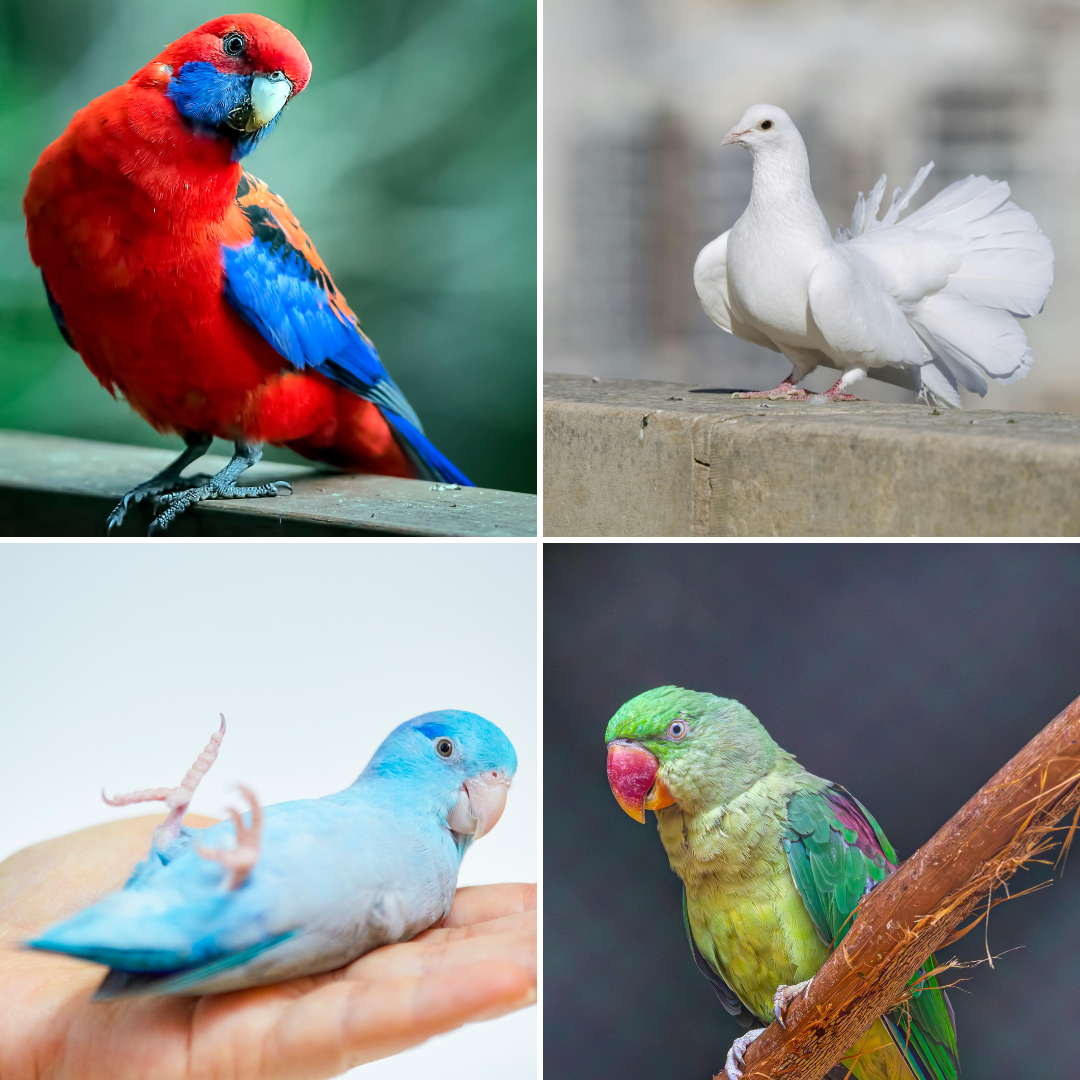
Setting Up Your Bird’s Cage
A well-organized cage is the foundation of a healthy, happy bird. Setting up a spacious and safe cage is essential for the best pet birds for beginners to ensure their comfort, exercise, and overall well-being.
The first step is choosing the right size cage. The cage should allow your bird to stretch its wings and move around comfortably.
Smaller birds like budgies or finches can thrive in medium-sized cages, while larger parrots such as conures or Amazons need much more space to prevent stress and physical issues.
Vertical space is important, but horizontal room is essential for birds that fly or hop frequently. Next, the cage material and design matter.
Stainless steel or powder-coated metal cages are durable and safe, preventing your bird from chewing harmful substances. Avoid cages with toxic paints or weak bars that can bend easily.
Bar spacing should match the size of your bird to prevent escape or injury. For example, small birds like finches need narrow spacing, while larger parrots require wider spacing.
Proper bar spacing ensures safety while allowing your bird to grip comfortably. Inside the cage, perches are essential for foot health and exercise.
Natural wood perches of varying thicknesses are ideal because they help prevent foot problems like bumblefoot and encourage natural gripping. Avoid sandpaper-covered perches, which can harm delicate feet.
Place perches at different heights to promote climbing and movement, but ensure they do not obstruct food and water dishes. Multiple perches also provide resting and observation spots, which help birds feel secure.
Toys are another key component. Birds are intelligent and curious, and a lack of mental stimulation can lead to boredom, feather plucking, or destructive behaviour.
A range of toys, including swings, bells, ropes, and foraging puzzles, should be included. Rotate toys weekly to maintain novelty and encourage activity.
Chewable toys are essential for parrots to satisfy their natural chewing instincts. Avoid toys with small detachable parts that birds can swallow, as this can pose a choking hazard.
Food and water placement are vital. Position dishes in easily accessible areas, away from perches that can lead to contamination from droppings.
Every day, give your bird a balanced food that includes seeds, pellets, and fresh fruits or vegetables, as well as fresh water.
Some birds prefer drinking from a water bottle, while others like a small bowl; observe your bird’s preference—regularly clean food and water containers to prevent bacterial growth.
Additionally, lining the cage floor is necessary for hygiene. Newspaper, paper towels, or specialized bird-safe liners make cleaning simple and help monitor droppings for health changes.
Steer clear of pine or cedar shavings since they contain harmful aromatic oils. Once a week, give the cage a thorough cleaning, using a disinfectant safe for birds to clean the bars, perches, and toys.
Finally, consider cage placement. Birds thrive when they feel part of the family but need a calm, draft-free environment. Avoid kitchens due to fumes, and place the cage where your bird can observe daily activity without constant stress. Provide a quiet area for nighttime rest and cover the cage partially with a breathable cloth if needed.
Turn Your Passion for Nature Into Income
🌿 Whether you love gardening, caring for animals, or exploring holistic living,
You can share your knowledge online and earn from it.
Discover how nature lovers are growing their passions into meaningful, income-generating blogs. 👇
Training And Bonding Tips For Pet Birds
Training and bonding with your bird is essential for creating a happy, healthy relationship. Here are key tips to help beginners train and bond with their birds :
1. Start With Trust Building
Before any training, establish trust. Spend quiet time near your bird’s cage, speaking softly, and offering treats. Avoid sudden movements or loud noises.
Allow your bird to approach you voluntarily. Trust forms the foundation of bonding and makes future training easier and more effective, reducing fear and stress.
2. Hand-Feeding Treats
Hand-feeding is a simple way to strengthen bonds. Offer favorite foods, such as millet sprays or small fruits, directly from your hand. This encourages your bird to associate your presence with positive experiences.
Gradually, they will approach more confidently, fostering trust and increasing their willingness to engage in training sessions.
3. Use Positive Reinforcement
Positive reinforcement is highly effective. Reward desired behaviour with treats, praise, or gentle petting. Avoid punishment, which can damage trust and increase fear.
Birds learn quickly when motivated by rewards. Consistency is key: reward immediately after the behaviour to help them understand the connection between actions and outcomes.
4. Keep Training Sessions Short
Birds have short attention spans. Limit training sessions to 10–15 minutes, once or twice a day. Short, frequent sessions prevent boredom and frustration, ensuring better learning and positive reinforcement.
Gradually, as your bird becomes more comfortable, you can extend sessions while maintaining engagement and focus on new behaviours.
5. Teach Step-Up Commands
Teaching your bird to “step up” onto your finger or hand is essential for handling. Use a treat as a lure and gently encourage them to step onto your hand.
Praise and reward immediately. Step-up training increases safety during cage cleaning, playtime, or vet visits and strengthens trust between bird and owner.
6. Respect Personal Space
Setting up a spacious and safe cage is essential for the best pet birds for beginners to ensure their comfort, exercise, and overall well-being. Birds need time to adjust, especially when they're new to your home.
Avoid forcing interaction or handling. Observing body language, such as fluffed feathers or vocalizations, helps you gauge comfort levels. Respecting space reduces stress and builds confidence, making bonding more enjoyable for both you and your bird.
7. Incorporate Daily Interaction
Incorporating daily interaction makes birds among the best pet birds for beginners, as it builds trust, prevents loneliness, and encourages healthy engagement.
Offer gentle petting if your species enjoys it. Interaction helps prevent loneliness, builds confidence, and encourages engagement.
Birds thrive on routine, so consistent daily attention strengthens emotional bonds and reduces behavioural problems like screaming or feather plucking.
8. Offer A Variety Of Toys
Toys provide your bird with mental and physical stimulation, which is crucial for training and bonding. Rotate different toys like ropes, swings, puzzles, and chewables to keep them engaged.
Interactive play with toys encourages exploration and curiosity. Participating in toy-based play sessions with your bird strengthens the bond and prevents boredom-related behaviours
9. Create Positive Associations
Link your presence with positive experiences. Offer treats, gentle talking, and calm attention when nearby. Avoid negative experiences like sudden movements, loud noises, or scolding during your presence.
Birds quickly learn associations, so creating positive connections encourages approachability, curiosity, and a desire to interact, enhancing both training and bonding.
10. Teach Simple Tricks
Teaching simple tricks like “wave,” “spin,” or “target touch” engages your bird’s mind and builds confidence. Use treats and praise to reinforce behaviour.
Trick training strengthens the bond by providing shared experiences and mental stimulation. Start with easy tricks, gradually increasing complexity as your bird gains confidence and enjoys learning.
11. Use Clicker Training
Clicker training is practical for parrots and small birds. Use a small clicker to mark desired behaviour, followed immediately by a treat.
The click signals success clearly and helps birds learn complex behaviours quickly. Training encourages focus, improves communication, and strengthens the bond between you and your bird.
12. Encourage Out-of-Cage Play
Supervised out-of-cage time allows exercise, exploration, and social interaction. Birds gain confidence in a safe environment while bonding with you.
Ensure the room is secure, free from hazards like fans or open windows. Engaging in gentle play or target games outside the cage improves trust and provides physical and mental stimulation.
13. Speak Calmly And Softly
Your tone affects your bird’s comfort level. Speak calmly and gently, using soothing words or whistles. Avoid shouting or abrupt tones, which can create fear and stress.
Birds respond to consistent, soft communication, making training easier and interactions more enjoyable, strengthening trust and emotional connection over time.
14. Observe Body Language
Learn your bird’s signals to understand mood and comfort. Signs like raised crests, fluffed feathers, or aggressive pecking indicate stress or fear.
Observing body language helps you respond appropriately, adjust training or play, and avoid negative experiences. Understanding non-verbal cues is critical for adequate bonding and building trust.
15. Establish A Routine
Birds thrive on routine for feeding, play, and training. Consistency reduces stress, encourages confidence, and strengthens bonds. Schedule predictable interaction times and training sessions.
A routine helps birds anticipate positive experiences, making them more receptive to learning, socialization, and trusting human interaction, which is essential for long-term bonding.
16. Avoid Punishment
Never punish your bird for mistakes or undesirable behaviour. Birds do not understand punishment the way humans do. Instead, redirect behaviour using positive reinforcement and gentle guidance.
Punishment can lead to fear, aggression, or withdrawal. Encouraging desired behaviours through rewards strengthens trust and promotes a healthy, respectful relationship.
FAQs
Which Pet Bird Is The Most Affectionate?
Cockatiels are known for being affectionate and gentle. They love spending time on your shoulder, whistling tunes, and forming strong bonds with their owners.
Do Beginner Birds Talk?
Yes! Budgies, Quaker parrots, and Indian Ringneck parakeets can learn to mimic words and short phrases with regular training and attention.
Conclusion
Choosing the right bird is essential for a happy and fulfilling pet experience. Selecting social and easy-to-care-for species like budgies, cockatiels, and lovebirds makes them some of the best pet birds for beginners.
Understanding their needs, providing mental stimulation, and offering daily interaction ensure a healthy, affectionate companion. Starting with the right species sets the foundation for a joyful, long-lasting relationship with your feathered friend.
I trust you enjoyed this article on Best Pet Bird for Beginners You Will Love. Please stay tuned for more inspiring guides, helpful tips, and ideas to help you live closer to nature every day.
Take care!
— JeannetteZ
💬 Your Opinion Is Important To Me
Do you have thoughts, ideas, or questions? I’d love to hear from you. Please leave your comments below or email me directly at Jeannette@Close-To-Nature.org.
📚 More Nature-Inspired Reads
Explore more ways to connect with nature, nurture your pets, and live in harmony with the world around you 🌿

